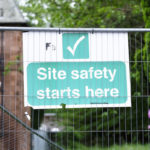PJ Farr, Managing Director of UK Connect, gives his take on how digitisation can improve safety on site.
So, site inductions, it’s a side of the construction business I both love and hate simultaneously. I send broadband engineers to over 150 sites per month, so like any business owner in the construction sector, I fully appreciate the need for my staff to complete an onsite induction each time they visit a construction project. However, the range of inductions my staff have to do is nebulous and time consuming. I’ve often wondered if there might be a way to streamline the process. Equally, they are massively inconsistent.
For example, some site managers will give a full 40-minute on-site briefing which consists of watching a safety video, checking CSCS cards and running checks with CITB. This is complemented with a far-reaching gather of next-of-kin details and other site-specific information, required before someone can even set foot on the build. This is correct procedure, time consuming but essential.
However, at the other end of the spectrum, you can just pitch up to a project, sign a physical, paper log book and crack on with work. This is not good enough and, sadly, it’s something which occurs up and down the country on a daily basis. Ultimately, it’s not just putting individual works at risk, it’s opening up the housebuilder and developer to significant legal and financial risk too.
Luckily, the solution to this inconsistency is not complex and, with emerging technology, the procedures can be conducted in an efficient, seamless way which pares down physical paperwork, improves record keeping and strengthens site safety and compliance.
Consistency is the buzzword here. Not all site managers are the same, but processes and procedures, particularly when they carry legal ramifications, should be standardised. Equally, by utilising innovative technology, a lot of these admin processes could be conducted well in advance, before staff even get to site.
Over the last year, we’ve worked with a number of the UK’s largest housebuilders to understand what’s causing these inconsistencies, pinpointing the problems and helping develop solutions. The question is, can effective inductions be conducted offsite? I think emerging technology provides the answer.
Digital Induction Plants (DIP), of which a number of options currently exist, invite potential contractors on a simple, but consistent induction journey from the comfort of their home or work desk. By conducting the process online you can ensure all parties have completed the briefing video and absorbed the information by following it with a test. Following this, they will be required to upload all necessary next of kin, CSCS and CITB information. This, in turn, creates a permanent digital record, guaranteeing partner compliance. The beauty is it can all be done prior to arrival on site.
Following this, a digital induction notification is sent to the site manager who can confirm with the touch of a button whether they are happy to give approval to any contractor who has completed the test.
The benefits are myriad. Personally, I’m surprised these platforms which, again, already exist, are not a universal requirement. Particularly, they reduce site manager and contractor time spent on inductions by up to 34 days a year whilst delivering the same quality consistency. That’s a month back, a significant saving.
The construction sector, particularly housebuilders, are often accused by the media of being slow to react to the digitalisation of UK business and industry. Digitising the site induction process is one (of many) ways in which they can quickly position themselves to meet the needs and requirements of the new regulatory framework. Ignorance is no longer an option. The technology exists. It’s time to harness it and improve the way we work.









